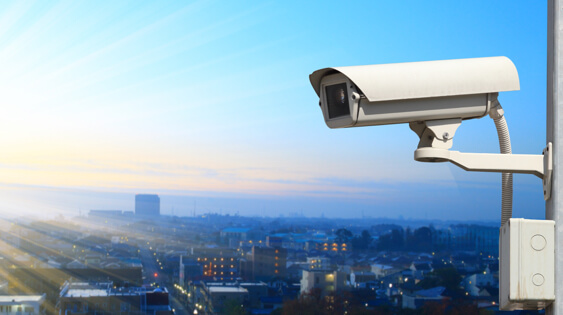 Exercise
Exercise
Tap all the highlighted words in the article below to see their definition. ⇩Do you ever get the feeling you’re being watched?
Well, there’s a good chance you are, in one way or another.
Below, we examine surveillance technology and some surprising ways it’s used.
What is surveillance technology?
Surveillance technology describes devices and software that monitor people or places to gather information about them.
These technologies can have benefits; for example, reducing crime, gathering data for medical research, and simplifying our lives.
But should we be worried about all this surveillance?
Read on and decide for yourself!
Types of surveillance technology
Here are some common technologies for gathering personal information:
- Video (CCTV): Anything from a single security camera at a specific location to a central network of videos controlled by the government
- Biometrics: The use of unique characteristics like retinas, voice, or facial features used for identification (e.g., fingerprints in an electronic passport)
- Drones: Small, unmanned aircraft that take photos and record audio and video
- RFID: Tiny computer chips put inside objects for contactless transactions (e.g., swiping a transit pass)
- Stingray: A device that monitors cell phones to get information about a person’s location and identity
- Computer and network surveillance: Monitors your use of the internet to get data about your friends, purchases, activities, and opinions

Surveillance in China
Surveillance technology is used worldwide. But to truly understand how far it can go, let’s examine the situation in China.
Skynet
China’s system of surveillance is called Skynet. In 2019, around 200 million Skynet cameras were monitoring the country (compared to around 30 million in the U.S.).
The Chinese government says Skynet was created to track crime: With so many cameras across the country, Skynet can catch a criminal in minutes.
Social credit score
The “social credit score” system has been in development since 2014. It’s used with Skynet to evaluate citizens’ behaviour. The government says that the goal is for people to trust one another.
It works like this: Everyone starts with the same score (1,000). Your score decreases with bad behaviour—from drunk driving to spending money frivolously.
Consequences for low scores include being banned from travel or losing employment. High scorers may get discounted electricity bills and faster tourist visa approvals.
A threat to freedom?
Mass surveillance supporters say it’s a positive thing, offering safety, convenience, and even rewards—but is it worth the price of freedom?
Surveillance Technology Comprehension

Well in Argentina it wouldn’t be bad idea.
We have a lot of crimes and either politcs neither justice/police can solve tbis problem.
I like the China example, unfortunately when in some regions of Mexico a similar plan was implemented the cameras gradually were disappearing.
I think surveillance technology can be very usefull because there is so many crimes in the world. But this technology should not limit the freedom of people .
I think that the question to answer is: in what hands you get the control of all of this stuff? Who make the control on government, secret services, etc..? It gives me goosebumps….
I have done this activity for more than 5 times. It’s quite attractive and interesting, nevertheless I would like to know if this process of repeating is ok or there’s something wrong with the app.